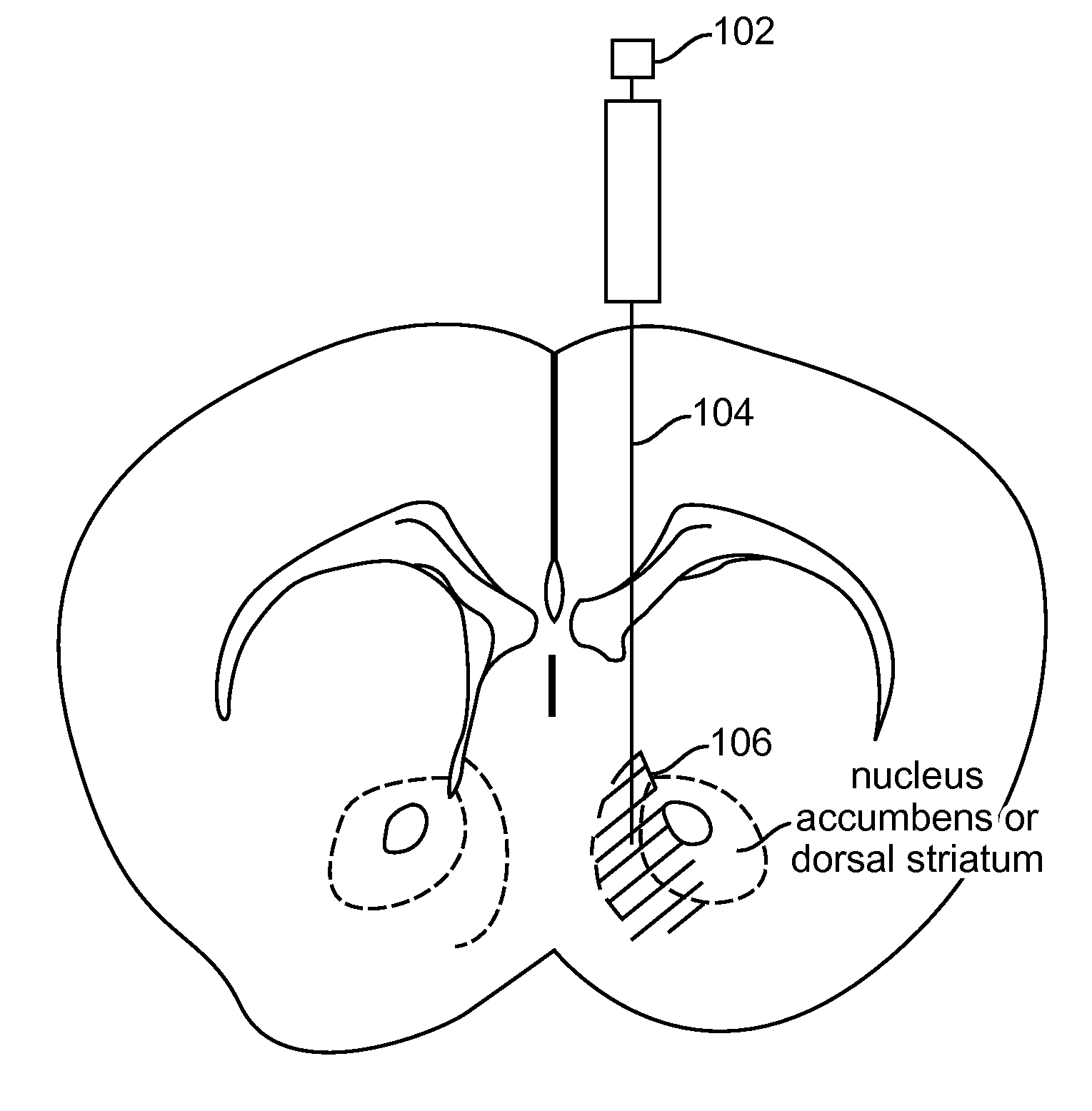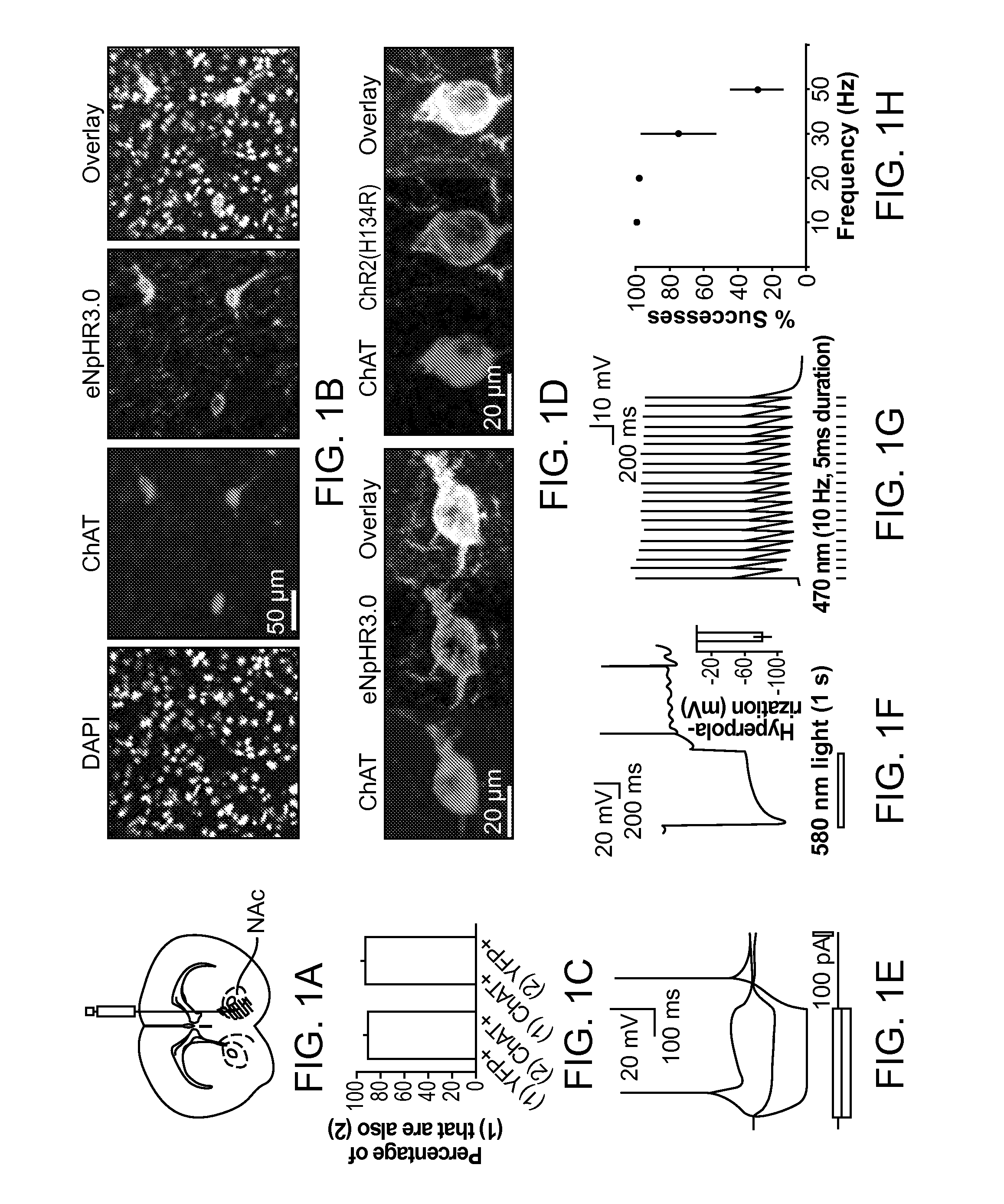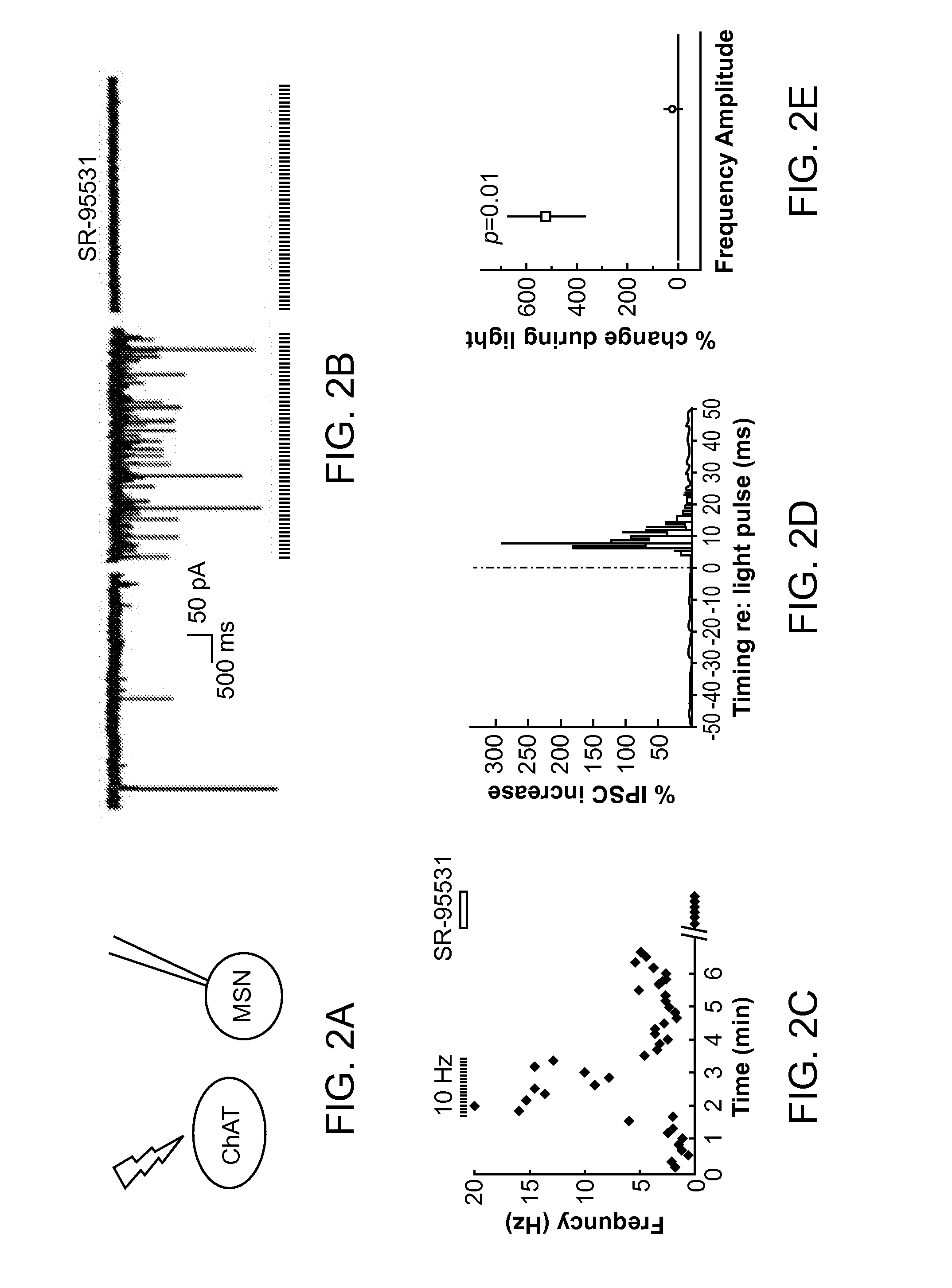Optogenetic Control of Reward-Related Behaviors
a reward-related behavior and optogenetic technology, applied in the field of optogenetic control of reward-related behaviors, can solve the problems of imposing costs on governments and societies, reducing the effectiveness of the treatment process, and reducing the effect of undesired effects on the reinforcement of other behaviors
- Summary
- Abstract
- Description
- Claims
- Application Information
AI Technical Summary
Benefits of technology
Problems solved by technology
Method used
Image
Examples
example 1
Expression of Light-Responsive Opsin Proteins in Cholinergic Interneurons of the Nucleus Accumbens
[0144]We undertook an optogenetic approach (42-44) to resolve this question by selectively driving or blocking action potential firing in these cells, with both high temporal resolution and high cell-type specificity. To express microbial opsin genes specifically in cholinergic interneurons, we employed a transgenic mouse line expressing Cre recombinase under the choline acetyltransferase (ChAT) promoter (45). We stereotaxically injected into the NAc (FIG. 1A) a Cre-inducible adeno-associated virus (AAV) vector carrying the opsin gene fused in-frame with coding sequence for enhanced yellow fluorescent protein (eYFP) (46, 47); the opsin gene encoded either the blue-light gated cation channel channelrhodopsin-2 (ChR2) (48, 49) or the yellow-light gated third-generation chloride pump halorhodopsin (eNpHR3.0) (50).
[0145]Materials and Methods
[0146]Subjects
[0147]BAC transgenic Choline Acetylt...
example 2
Effects of Depolarization of Choline Acetyltransferase (ChAT) Interneurons
[0156]ChAT interneurons are thought to be tonically active in vivo (3-10 Hz (52, 53)), but it has remained mysterious how (or even if) this kind of slow activity in the sparse ChAT cells could be causally involved in affecting local circuit activity or behavior. We capitalized on optogenetic control to address this question with a combination of slice electrophysiology, in vivo electrophysiology, and freely-moving behavior.
[0157]Materials and Methods
[0158]Acute Brain Slice Physiology
[0159]Coronal cerebral brain slices were prepared from adult mice with virus previously injected (>2 weeks prior to slicing), using standard techniques in strict accordance with a protocol approved by the Animal Care and Use Committee at Stanford University. Coronal slices 250 μm thick were cut with a vibratome using a sapphire blade in ice cold N-methyl-D-glucamine (NMDG)-based cutting solution containing 135 mM NMDG, 1 mM KCl, 1....
example 3
Effects of Hyperpolarization of Choline Acetyltransferase (ChAT) Interneurons
[0165]Next, the consequences of specifically inhibiting ChAT interneurons were explored, employing Cre-dependent eNpHR3.0 expression in vivo.
[0166]Materials and Methods
[0167]Mice, optrode recordings, and brain slices were prepared as above.
[0168]Results
[0169]In contrast to what was observed with ChAT neuron excitation, firing of NAc neurons was typically increased in likely MSNs by optogenetic inhibition of the ChAT cells; a representative cell is shown in FIG. 3A). Power spectral analysis revealed a striking frequency peak in the firing pattern at ˜4 Hz in these in vivo recordings (FIG. 3B). Summary data are presented in FIG. 3C; across the population of significantly modulated sites, most neurons were excited by the optogenetic inhibition of ChAT neurons (n=17). We were able to obtain a single-unit recording from a rare putative ChAT interneuron, which was completely shut down by eNpHR3.0 (FIG. 3D) and di...
PUM
| Property | Measurement | Unit |
|---|---|---|
| Fraction | aaaaa | aaaaa |
| Wavelength | aaaaa | aaaaa |
| Wavelength | aaaaa | aaaaa |
Abstract
Description
Claims
Application Information
 Login to View More
Login to View More - R&D
- Intellectual Property
- Life Sciences
- Materials
- Tech Scout
- Unparalleled Data Quality
- Higher Quality Content
- 60% Fewer Hallucinations
Browse by: Latest US Patents, China's latest patents, Technical Efficacy Thesaurus, Application Domain, Technology Topic, Popular Technical Reports.
© 2025 PatSnap. All rights reserved.Legal|Privacy policy|Modern Slavery Act Transparency Statement|Sitemap|About US| Contact US: help@patsnap.com



